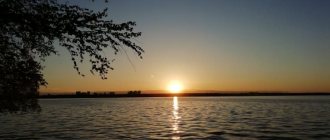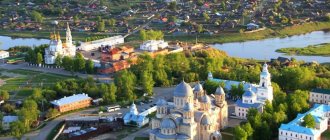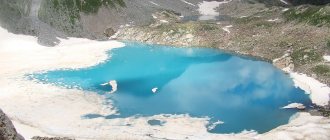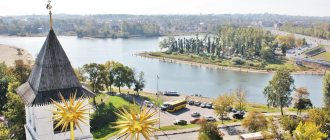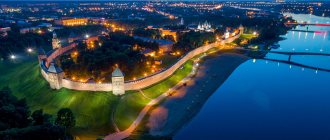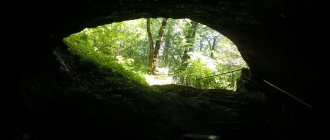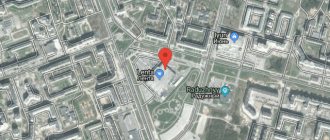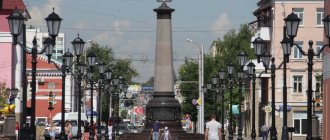Resort Description
The name of the tourist base was given by Lake Bannoye, located next to the complex. The resort of Magnitogorsk is located in the Republic of Bashkortostan, the nearest settlement is the village of Zelenaya Polyana. The camp site is divided into two parts. The first is designed for young skiers, there are simple trails, and there is 1 rope tow. The second part of the resort area is places for recreation and skiing for beginners and experienced athletes.
General description of the resort:
- Skiing season is November-April.
- There is a children's ski school "Medvezhonok".
- There is a large eight-seater lift with panoramic windows from Doppelmayr. He works all year.
- Trails have been developed for snowboarders, and you can practice freeride.
- Entertainment – Husky school, winter karting, tubing.
- The infrastructure around the camp site has been developed; you can choose different accommodation options.
The entrances to the Big and Small complexes are different, and the price of the ski-pass depends on this. There is a rental of ski equipment and equipment. You can rent a set or individual parts. On the official website of Magnitogorsk GLC “Bannoe” there are prices, descriptions of services, and current promotions.
Tip: before your trip, check the list of rental equipment. You can take some of the equipment with you, and rent the rest at the sports base.
How to get there
The closest place to the ski resort is Magnitogorsk. The distance from it to the sports complex is 44 km. it has an international airport, which reduces travel time. Flights from Moscow, St. Petersburg and other Russian cities land here. Local buses run from the airport towards the ski resort.
How to get to the center of the ski resort "Metallurg-Magnitogorsk":
- By bus. From the city there are routes to the Bannoe stop. Travel price – from 70 rubles. But this method will be inconvenient for large groups of tourists and independent travelers.
- By taxi. From the city the price of the trip will be 1500-2000 rubles. It is recommended to order a car from an official service; taxi drivers without a license will charge more.
- Transfer. This service is available on the official website of the Magnitogorsk ski resort. It can be ordered together with accommodation or separately.
For those traveling by car, you need to choose the route through the villages of Ozernoye and Elimbetovo. Driving along Torfyanaya Street you need to turn onto the street. Green Polyana. The travel time will be 30-35 minutes. In winter there can be problems on the roads - skidding, accidents. Therefore, it is recommended to leave in advance.
Tip: check-in time for hotels and resort hotels is from 13:00. If you decide to check in earlier, you will have to pay at least half a day. This must be taken into account when planning your trip.
.
Museums and historical monuments of Magnitogorsk
Monument to the Rear Front
Address: Lenin Ave.
The monument has existed for about 30 years. It was created in honor of the workers who defended the rear of our Motherland during the Great Patriotic War. To erect the monument, the shore of the Urals was covered with an 18-meter mound containing a reinforced concrete frame inside. The monument is made of bronze, its height reaches 15 meters.
The design consists of two sculptures: the worker handing over the sword looks towards the metallurgical plant (to the east), the gaze of the warrior receiving the sword is directed in the opposite direction (west), towards the front line. Near the monument there is an eternal flame, as well as plates with the names of soldiers killed in the war (more than 14,000). The author of the monument is Lev Nikolaevich Golovnitsky.
The monument to home front workers was erected in Magnitogorsk, since more than half of all tanks participating in the war were made from Magnitogorsk steel.
Monument "First Tent"
Address: pl. Sverdlova
The monument is dedicated to the first workers who carried out construction in Magnitogorsk. The author of the sculpture is Lev Nikolaevich Golovnitsky. The date of opening of the monument is considered to be May 9, 1966. The composition represents a stone tent, symbolizing the home of the city's pioneers. Another element of the monument is a hand that holds a piece of iron ore.
The height of the monument is 6 meters. The tent is made of concrete; cast iron was used to make the arm.
The monument is located in a park area of the city and has access to a pond.
Metallurgical Plant Museum
Address: Pushkin Ave., 19 Telephone: 8 (35-19) 24-39-06 Website: https://tonkosti.ru/Museum of the Magnitogorsk Metallurgical Plant Opening hours: Mon-Thu: 8:00 - 17:00, Fri: 8:00 - 15:45, lunch: 12:15 - 13:00, Sat-Sun: closed Cost: free
Founded in October 1973. Most of the museum displays military equipment. Here you can see floating transporters, T-72 tanks, an L-29 aircraft, and a Katyusha mortar. The museum contains equipment that enterprises supplied troops with during the war.
The museum shows a detailed history of the city. A rather interesting exhibit is the model of Magnetic Mountain. Previously, its height reached 616 meters; today it is surrounded by many quarries. The richest iron deposit was concentrated here.
In the museum you can see miniature versions of the equipment and a model of the metallurgical plant itself, which contains all the divisions of the plant in a reduced form.
Museum of Local Lore
Address: st. Soviet Army, 51a Phone: Website: https://www.museum.ru/M1127 Opening hours: Mon-Fri - from 10.00 to 18.00, Sat - from 10.00 to 16.00, Sun - closed Cost: from 10 to 50 rubles.
The museum was founded in August 1944. The first exhibitions were opened in 1946; they were dedicated to the Great Patriotic War and the history of the city’s main mountain, Magnitnaya. The museum displays collections of copper castings, decorative elements, and varieties of artistic metal.
Here you can find personal collections of Heroes of the USSR, honorary citizens and honored workers in various fields.
The exhibition “History of Magnitogorsk – History of the Country” is very popular. Meetings with local historians, students and veterans are organized at its base.
Monument to Lermontov
Address: square named after M.Yu. Lermontov
The author of the sculpture is Ivan Korzhev. The monument was created in honor of the great Russian writer and poet Mikhail Yuryevich Lermontov. The composition combines a bronze sculpture of the writer and a brass stele with poetic images and poems. In the dark, poems and images begin to glow.
The Magnitogorsk monument to Lermontov is one of two in Russia that has internal lighting. Another similar monument is dedicated to Grigory Kotovsky and is located in Podolsk.
Monument to parents
Address: Metallurgov Square
The monument was built relatively recently - in 2007. The author of the sculpture is Konstantin Gilev. The composition, made of cast iron, represents an elderly man and woman with sadness and fatigue in their faces. The sculpture calls to remember the people who gave life, to appreciate and respect the older generation.
Route map
For athletes and amateurs of different levels, 6 routes have been developed, which differ in complexity and length. There are 4 lifts leading to them - 2 drag lifts, one gondola type and a baby lift. Additionally, there is an eight-seater model leading to the highest point, which is indicated on the map of the slopes of the Magnitogorsk ski resort. This makes it possible to make the slopes more difficult during your vacation, improving your skiing and snowboarding skills.
Description of the slopes of the sports complex:
- No. 1 – blue. The total length is 42450 m, the height difference is 450 meters.
- No. 2 – red. Length – 2150 m.
- No. 3 – green. Suitable for beginners, length – 2300 m.
- No. 4 – red. For athletes with average skating skills. Length – 2000 m.
- No. 5.1 – educational. Ski school trainers conduct lessons here. Length – 300 meters.
- No. 5.2 – educational. Convenient for beginners. The descent lasts 350 m.
There is a separate snow park where you can go sledding and ice skating. Its area is 20 thousand m². it is equipped with a baby lift, and young athletes from the “Bear Cub” club conduct training here. The infrastructure is convenient, you can improve your skiing and snowboarding skills during your vacation.
The price of a ski pass at the Magnitogorsk ski resort depends on the number of lifts. For a large lift, an adult must pay 250 rubles, a child – 180 rubles. The maximum price of a ski-pass for 7 days is 3,000 rubles.
Tip: to practice freeride, ask the administrators for the location of convenient slopes. It is recommended to report that you are going beyond the established trails.
Accommodation
A special feature of the Magnitogorsk ski resort is its developed surrounding infrastructure. For accommodation, you can book a room in a local hotel, rent a house in a cottage village, or stay in other hotels. It is recommended to book in advance, in winter there are many tourists and the choice of accommodation options is small.
Where can you stay near the sports complex:
- Sanatorium "Yubileinoe". There are comfortable rooms here, you can order treatment and preventive procedures. The price for ski-pass is lower than in other hotels. Guests can visit a café, a restaurant, and a children's entertainment area. The resort has a lot of entertainment besides skiing.
- "Berezki", rest house. Located at a distance of 800 meters from the GLC. It consists of 7 buildings, there is an indoor swimming pool and baths. The gym service is paid separately. There is a spa salon.
- Apartment "Bannoe". Two types - with free Wi-Fi and without Internet. Free parking is available for guests. The slopes are located 600 m from the main entrance.
- Hotel Alpenhof. The administration provides free parking and Wi-Fi, and there is a choice of rooms. A separate sauna will help you regain strength after a sports day.
You can book a room at the Mayak Hotel, which is located close to the slopes of the Magnitogorsk ski resort. However, its room stock is relatively old, but the prices are lower than in other hotels.
Tip: if you book early, the price may be reduced. This can be clarified on the official website of the hotel.
Magnitogorsk Part 2 - Magnitogorsk
In Soviet urban planning, a plant is like the Kremlin in the Russian Middle Ages. So this post will talk about the “Magnitorsk Kremlin” - the legendary Magnitogorsk. There will also be some panoramas and two Magnitogorsk churches. If you are a connoisseur of beauty, don’t go under the cat, there are only industrial and remakes.
So, Magnitogorsk. Or Magnitogorsk Iron and Steel Works. Or MMK. The flagship of Soviet metallurgy, at one time the largest metallurgical plant in the world, built in the 1930s, it provided the vast majority of metal during the Second World War: every 3rd tank and every 2nd shell was made from Magnitogorsk steel. For the victory over the Nazis, Magnitogorsk was no less important than Stalingrad or Prokhorovka. In its best years, MMK's capacity reached 20 million tons of steel per year.
Now it is somewhat smaller, but still Magnitka remains the largest metallurgical plant in Russia. It is also worth saying that what MMK is most impressive about is its size—it can be seen with the naked eye that it is noticeably larger than any other plant in Russia. However, the industrial scene itself is less spectacular here, since MMK’s technological equipment is one of the best in the country. But not a single city gives you the opportunity to view the grandiose plant from different points so well.
For starters, views of Magnitogorsk from the center of Magnitogorsk: A continuous forest of smoke-stained pipes.
Notice the reflection:
View from the First Tent:
The mining and processing plant on Magnitnaya Gora is the most infernal spectacle at the plant.
Zavodskaya TPP
And then you need (or, better yet, don’t) take tram 18 at the South Bridge and go to Mayakovsky Street. From the stop, walk back a little and go up the hill. At its top there is a good-quality stone observation deck - and it’s not clear why? Could it really have occurred to someone in “official” circles to make a platform to look at the plant?
Here it is - in full view.
Separate parts of the plant. In the background is a blast furnace. Periodically, it spews out a cloud of black smoke, like a fire in a tire dump - cast iron is being smelted.
Open hearth furnace. Recognizable by orange smoke - I saw almost the same one back in Izhevsk.
And here, if you look closely, you can see the Magnitogorsk entrance.
And I can only guess about the functions of this infernal machine:
Next to the plant is Magnitnaya Mountain itself. Its ores once contained 65% iron, and were the richest in the world. Even among the ancient cultures that inhabited the Ural steppes during the time of Arkaim, the mountain was considered sacred. A legend has been preserved that once the army of Batu Khan was magnetized to this mountain, and they were able to leave only by throwing off their armor. Now the mining and processing plant has worked out 2 of its peaks out of 5, and the plant operates on imported ore. However, the chimneys of the mining and processing plant smoke terribly:
The old socialist city, built before the war, is also visible. I didn’t get there anymore, but it’s a pity - the Stalinism there is probably also interesting.
From the observation deck you can see a vast private sector scattered across the hills:
Also visible are houses of a “Western” appearance and cottages. This is an area of the socialist city, built isolated from the main part for foreign specialists - mostly Americans.
From the hills you can see other enterprises - an elevator, a cement plant, and some factories, the purpose of which I have no idea.
From the neighboring hill one can see Magnitogorsk itself, the Brezhnev quarters and the Ural Mountains rising in the distance.
The way back through the outskirts of the “left bank” social city. It must be said that the two shores in Magnitogorsk are really Europe and Asia. On the right bank it’s clean, calm, you can’t see any rednecks or goons, there are a lot of smiling faces. On the left, the people are much poorer (this can be seen both in their clothes and in their looks), and it’s scary to walk here - people seem to be suppressed by the plant. By the way, the houses in this photo are the oldest buildings in the socialist city:
Life near the plant:
I love factories, and I think their time for architecture will come. But still, for me, the plant is the earthly personification of Hell. Probably, if Hell exists, it should be similar to Magnitogorsk, only much larger... And in order not to end the post on such a gloomy note, I will give photographs of 2 Magnitogorsk churches:
The mosque stands at the “middle” road bridge across the pond, on the right bank, and very successfully plays on Horde traditions (the shape of a free-standing minaret, a thin tent, the Black Chamber in Bolgar is visible in the building itself):
Orthodox Ascension Cathedral, built near the South Bridge. Large, made with some imagination.
There is another miracle in Magnitogorsk that I didn’t know about, and now I really regret it. The fact is that in Magnitogorsk there are two major churches built in Soviet times!
Church of the Archangel Michael (1946, 1982):
Photo: Vladimir Bulantsev. From the "People's Catalog of Orthodox Architecture".
St. Nicholas Church (1946):
Photo: Vladimir Bulantsev. From the "People's Catalog of Orthodox Architecture".
Both churches were erected after the war on the initiative of MMK director Grigory Nosov. St. Nicholas Church was closed in 1960 and transferred to a warehouse, then a club, then an observatory, and was returned to believers only in 1996. They could not close St. Michael's Church. Be that as it may, this is an urban planning phenomenon: 2-3 dozen self-built wooden churches of the Soviet era can be found in Russia, but full-fledged stone city churches seem to be only here. Alas, I have no information about their exact location.
I remember Magnitogorsk. This is an integral and beautiful industrial city, unlike either the old factory cities of the Urals or the metallurgical cities of Eastern Ukraine.
Meals at the resort
The infrastructure of the tourist complex provides several options for catering. The ski resort of Magnitogorsk has 1 restaurant and 4 cafes. They offer dishes of European and national Russian cuisine. An alternative is to book a hotel room with breakfast or full board. In the cafe you can relax between climbs to the slopes of the camp site.
Restaurants and cafes of the sports complex:
- "Mountain Gorge", restaurant. There are banquet and main halls. Total capacity – 90 people. Located on Mount Yamankai, at an altitude of 940 meters. From here there are good views of the surrounding area.
- "Eastern Courtyard", cafe. Here you can try good samsa and serve hot drinks. Free Wi-Fi is provided. Located next to the main cableway.
- "Extreme", cafe. Located next to the administrative building of the resort, they serve delicious barbecue and mulled wine. The number of places is small, so there are always a lot of tourists and independent travelers here.
- Snack bar "Vzlet" and cafe "VO-cafe". Located in the main building of the camp site, they are convenient for organizing breakfasts.
When renting guest houses and cottages, inquire about kitchen availability. This way you can save money by bringing some of the products with you. But remember that the main task of a tourist is to get a good rest.
Tip: Bring water or soft drinks with you before ascending to the peaks. There are no cafes on the slopes where you can buy them.
Magnetic Mountain
In August 2018, I was lucky enough to visit Magnitogorsk.
I taught high school history for almost 15 years. She talked about the Dneproges and Magnitogorsk. And I always wanted to see this legendary mountain with my own eyes. That’s why, on the way to Yekaterinburg, to the translators’ forum, I made a special stop in Magnitogorsk.
Of course, the Internet suggested how to climb Magnitka. The fact that I had to follow some paths in a completely unfamiliar place was a little annoying. That's why I made an order to the Universe: please help me find travel companions. And the Universe responded!
We climbed Magnitka with Elena Krasovskaya, her son Ivan and father-in-law Alexander Ivanovich, who once worked at the Magnitogorsk Iron and Steel Works. My experience shows that it is the old-timers who tell about local attractions better than any guide. Because they know everything, as they say, from the inside. And so it turned out.
So, I invite you to the same Magnitogorsk that every schoolchild in the Soviet Union heard about.
Click on the photos and they will open in larger sizes
Mount Magnitnaya is a collection of several mountains. They have very interesting names: Magnitnaya (Uzyanka), Dalnyaya, Atach, Berezovaya, Ezhovka. During the formation of these mountains, sedimentary rocks (sandstones and limestones) were intruded by volcanic rocks (diabase and granites). And from the contact of sedimentary rocks with igneous rocks, a deposit of magnetic iron ore arose.
Local residents have long noticed that animals avoid the mountain. At first this fact could not be explained. And then, when they started using the compass, they immediately saw that the needle deviated greatly. It became clear that there was a large ore deposit nearby.
In 1743, a Cossack village was founded near the mountain, which was called Magnitnaya. And the development of the field . In the summer, the ore was collected on the surface and piled up; in the winter, it was taken out using sleds and sent to the Beloretsk factories.
At the beginning of the 20th century, American engineers came to the field and planned to open their own production here. Thank God, the October Revolution prevented the implementation of this project. And in the thirties of the last century, the Soviet Union was already firmly on the path of industrialization. And near Magnitnaya Mountain, construction of a metallurgical plant began.
This is what Magnitka looks like. At the bottom right you can see the quarry where ore is being mined. The terraces are clearly visible on the left.
In Magnitogorsk, next to the “Veterans Park” there is a monument called “The First Tent” . It shows a hand holding a piece of iron ore.
And a symbolic tent in which the first builders of Magnitogorsk lived.
Along the perimeter of the monument are cast four lines from a poem written by the famous Magnitogorsk poet Boris Ruchev.
“We lived in a tent with a green window,
Washed by the rains, dried by the sun,
Yes, golden fires were burned at the doors
On the red stones of Magnetic Mountain."
By the way, in Magnitogorsk there is a memorial museum of Boris Ruchev . I will talk about this in a separate essay.
In 1931, a metallurgical plant was opened near Magnitka. It was he who became the city-forming enterprise for Magnitogorsk.
Also in 1931, industrial mining of iron ore .
A railway line was built from Mount Magnitnaya to the plant . The rock was loaded into trains and delivered to the workshops.
With the beginning of the Great Patriotic War, the Magnitogorsk Iron and Steel Works began operating uninterruptedly. In August 1941, metallurgical plants were evacuated here from Mariupol and Zaporozhye (they were then called Southern Magnitka). At the Magnitogorsk Metallurgical Plant, the 4500 rolling mill was launched, which made it possible to produce stronger tank armor.
Every second tank and every third shell was manufactured in Magnitogorsk and sent to the front!
In 1979, a monument “Rear to Front” . Especially for him, an artificial hill about 20 meters high was built on the banks of the Ural River and its base was reinforced with reinforced concrete piles.
The composition of the monument is simple: a worker hands a sword to a soldier . The worker statue faces east, in the direction of the metallurgical plant. And the warrior looks to the west, because that is where the invaders were.
Another very interesting fact is associated with this sculptural composition. I talked about this in an essay dedicated to the 75th anniversary of our country’s Victory in the Great Patriotic War.
In 1971, a monument dedicated to the 40th anniversary of the Magnitogorsk mine . The monument is made in the form of an excavator bucket with a block of ore.
By the way, two blocks of iron ore lie at the very base of the monument. They can be seen in the top photo.
And there is a very interesting inscription . Be sure to click on the photo to read the text itself! There are not only historical facts here, but also linguistic points.
When we were descending from Magnitka, we stopped along the way to look at several old houses . Alexander Ivanovich said that houses of this type (see the next photo) were intended for engineers and factory management workers. Does everyone know that engineering and technical workers are engineering and technical workers?
And such houses were built for working families.
The houses still have old mailboxes. Remember these?
Where will you now see similar inscriptions indicating the index?
With all my heart I thank Elena, Ivan and Alexander Ivanovich for this trip to the famous Magnitka. Here it is, living history, right before your eyes! You can climb the mountain. See the terraces, the quarry, the plant itself. But it still works. And you begin to clearly see the inextricable connection between the past and the present...
I would like to end this essay on a lyrical note. At one time, Alexandra Pakhmutova and Nikolai Dobronravov wrote the song “Magnitka” . In 1982, it was performed in the program “Song-82” performed by Lev Leshchenko. And in the same year, the song became the official anthem of the city of Magnitogorsk.
If the video does not play on your device, you can watch it here: https://www.youtube.com/watch?v=TD6bwwAJyLA&feature=emb_logo
I plan to write a couple more travel essays about Magnitogorsk. In one I want to talk about the sights of the city, and in the second - about the Boris Ruchev Museum. So stay tuned for project news!
© Tatyana Trunova, February 2019
Other sights of the Urals
- Natural Park "Oleniy Ruchi" (Sverdlovsk region) - the largest natural park in the Southern Urals in the lower reaches of the Sergi River
- The Museum of the History of Stone-Cutting and Jewelry Art (Ekaterinburg) is one of three “stone” museums in Yekaterinburg. The exhibition presents amazingly beautiful items made from Ural gems.
Legendary places of the Land of Soviets
- Icebreaker "Lenin" (Murmansk) is a world-famous Soviet nuclear icebreaker. It is currently moored in the port of Murmansk.
- Underground museum complex (Balaklava, Crimea) - secret military installations of the USSR during the Cold War: a former nuclear arsenal and a shelter for submarines

